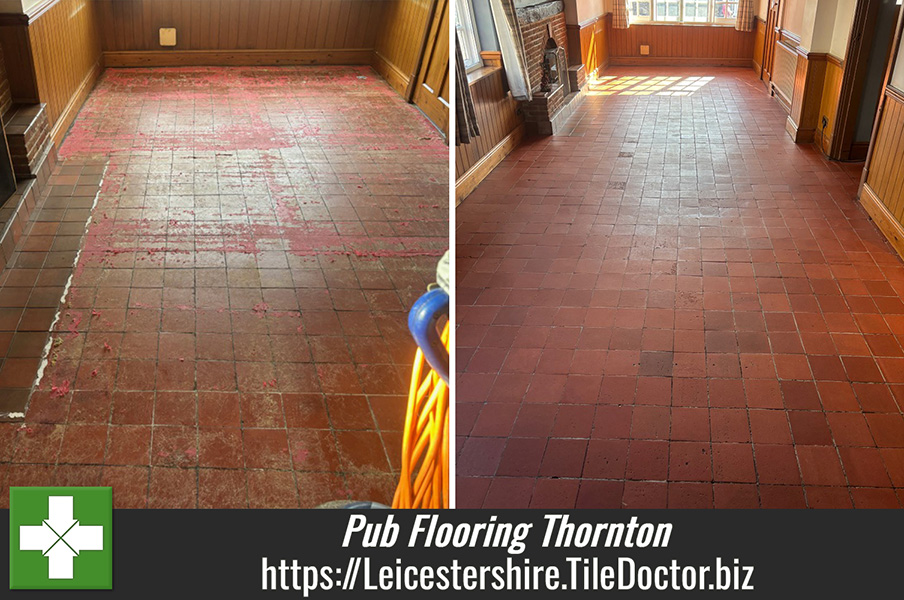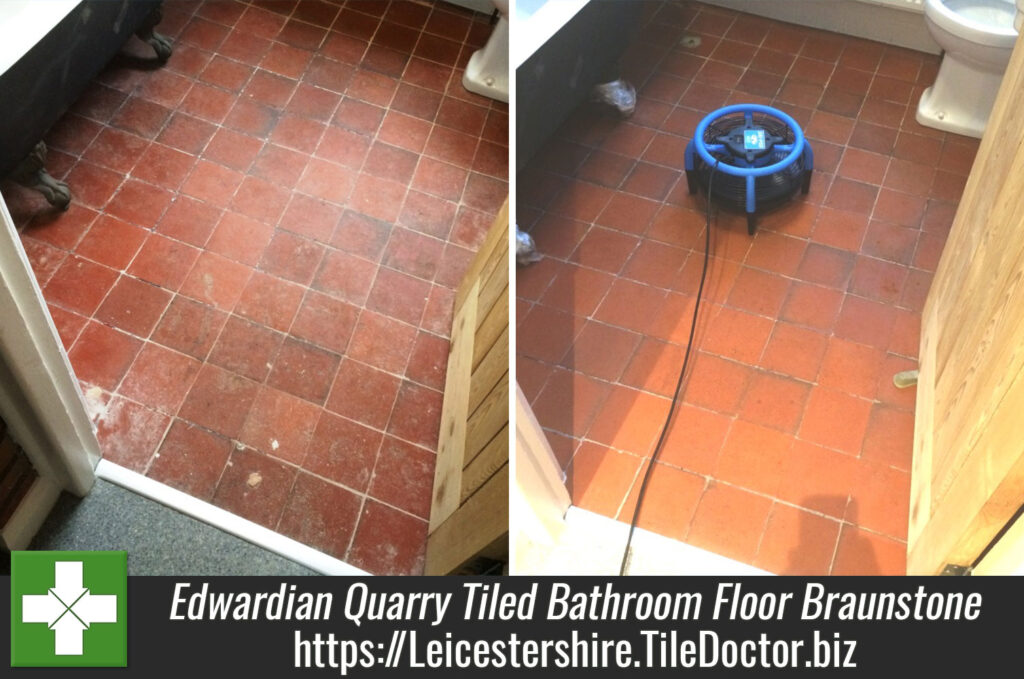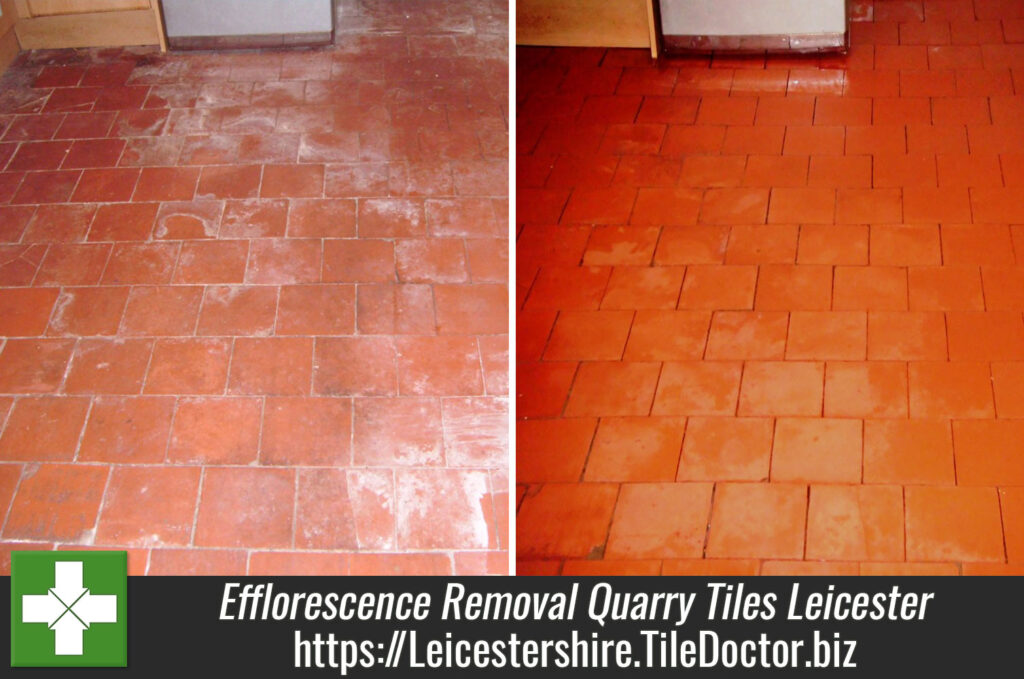Quarry Tiled Floor Renovated at the Bricklayers’ Arms Thornton Village
We were contacted by a local brewery regarding the renovation of an old Quarry Tiled Floor at the Brick Layers Arms in Thornton near Coalville. The brewery was Everards of Leicestershire who are a famous brewer with over 170 years of history in the region.
The Bricklayers Arms was being refurbished, and the floor had been included as part of the project. The pub itself is over 500 years old and a main focal point for the village, with its own footpath leading down to the Thornton Reservoir.
The Edwardian era quarry tiles had been discovered under a large carpet that lifted in the lounge bar, and it was decided to have the floor restored as an original feature. The carpet had been secured to the tiles using a strong adhesive which had contaminated and stained the whole floor.
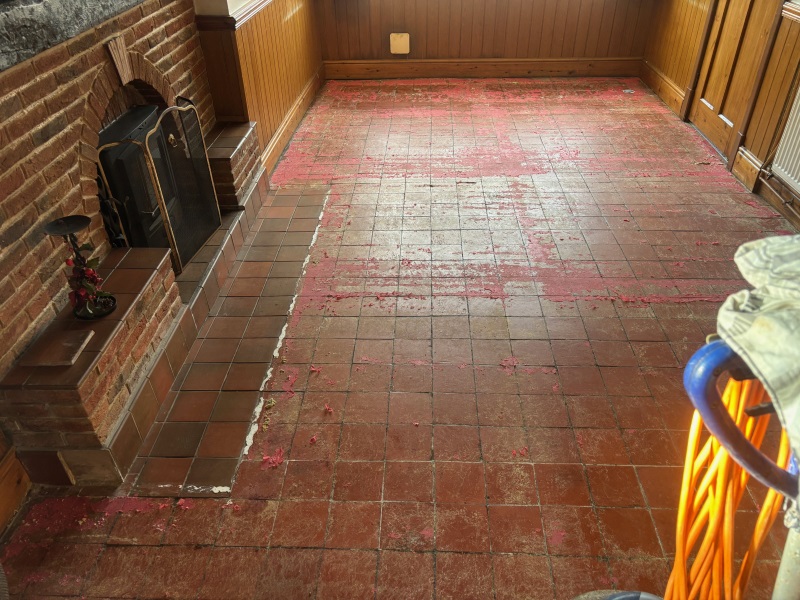
Happy to assist I went over to the pub and conducted a test clean with the pubs manager Paul. The clean went well and after submitting a detailed quote, Everards commissioned us to deep clean & seal all the hard floors in the pub, including the toilets.
Cleaning Quarry, Flagstone and Porcelain Tiled Floors
The work was then scheduled for the end of the renovation works when most of the tradespeople would be out of the building, this always makes sense as we don’t want to have to clean the floor twice.
One of the main issues was old carpet adhesive so this was tackled first using a strong dilution of Tile Doctor Remove & Go which was sprayed onto the floor and left to soak in for ten minutes. This product is a heavy-duty stripping solution designed for problem soiling and the removal of coatings and contaminants.
Thick glue deposits were carefully scraped off by hand before the solution was scrubbed into the quarry tiles using a rotary machine fitted with a coarse silicon carbide brush. The resultant slurry was then extracted off the floor using water and a wet vacuum.
Once this step was completed, we cleaned the Quarry tiles & Grouting with Tile Doctors Pro-Clean diluted at 1:20. This is another specialist cleaning agent that works well on grout. The method used was the same, i.e. allowing it to dwell before scrubbing it in and extracting.
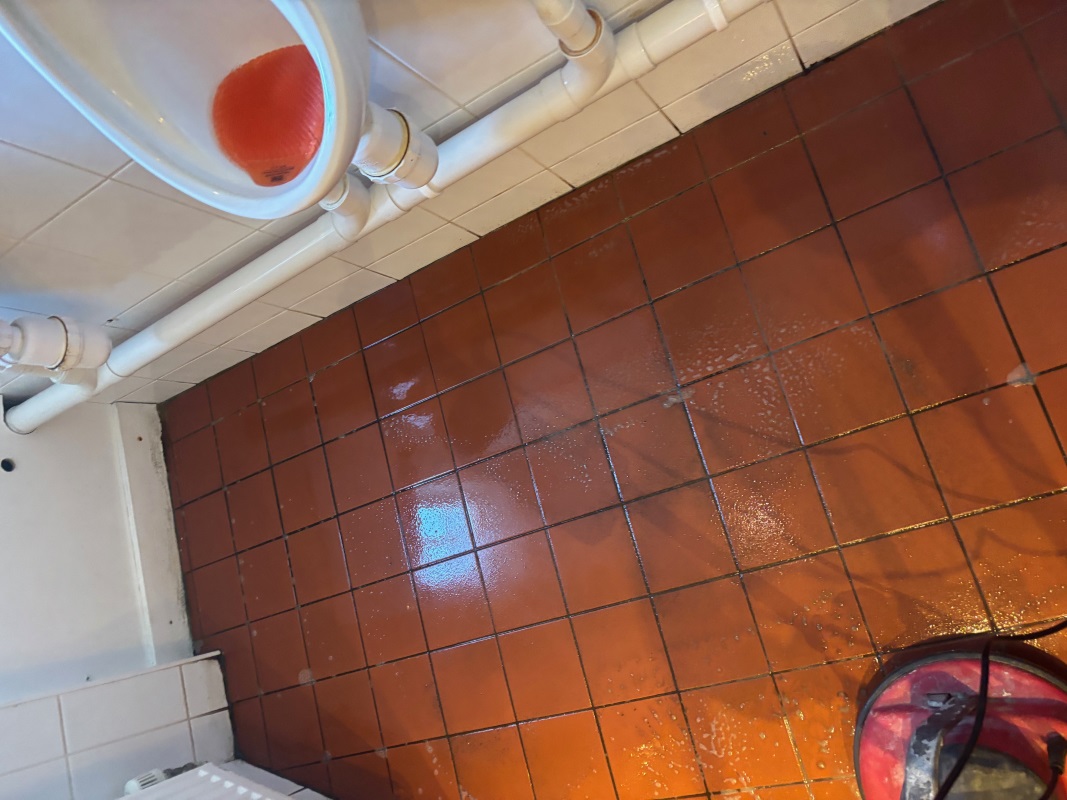
The floor was then neutralised with a diluted solution of Tile Doctors Grout Clean-Up which being an acid neutralises the previous cleaning products which were alkaline. This product also further cleans the floor and removes other contaminates such as grout hazing. The floor was rinsed with water and extracted again to leave the surface chemical free and allowed to dry.
We worked our way through the pub deep cleaning the remaining flooring which included another section of Quarry tiles that hadn’t been covered by carpet, a Flagstone floor and modern Quarry & Porcelain tiled floors installed in the toilets. All these floors were similarly cleaned and where needed intensively cleaned with Tile Doctor Grout Clean-Up to further restore their appearance.

Sealing Quarry, Flagstone and Porcelain Tiled Floors
Once a floor had dried the last step was to apply a sealer which protects the tiles from ingrained dirt, this ensures dirt remains on the surface where it can be easily cleaned away.

A variety of Tile Doctor sealers were used for this to ensure the best result for each type of tile. For instance, to seal the Quarry tiles a couple of coats of Tile Doctor Ultra-Seal were applied which is an impregnating sealer that gives a natural look. Conversely the Flagstones were sealed with Colour Grow which had a colour enhancing formula.
Porcelain tiles don’t usually accept a sealer however to protect the grouting in the toilets Tile Doctor Ultra-Seal was applied. Grout being cementitious and rough does cause it to trap dirt so this will help keep the grout stay cleaner for longer.

For aftercare cleaning Tile Doctor Neutral Tile Cleaner was supplied, it’s essential to use a product like this for maintaining the appearance of sealed flooring and we instructed the pubs management on how to use it effectively.
Professional Restoration of Quarry, Flagstone and Porcelain Tiled Floors in Leicestershire
Quarry Tiled Floor Renovated at the Bricklayers’ Arms Thornton Village Read More »


